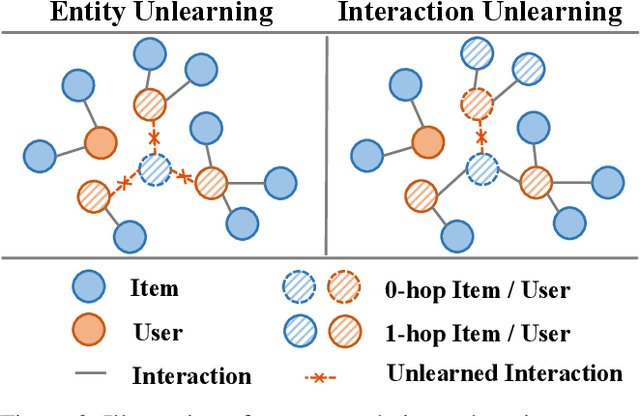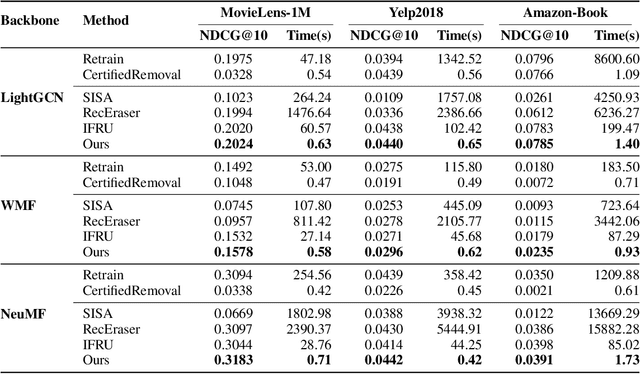Lin Li
and Other Contributors
Constrained Language Model Policy Optimization via Risk-aware Stepwise Alignment
Dec 30, 2025Abstract:When fine-tuning pre-trained Language Models (LMs) to exhibit desired behaviors, maintaining control over risk is critical for ensuring both safety and trustworthiness. Most existing safety alignment methods, such as Safe RLHF and SACPO, typically operate under a risk-neutral paradigm that is insufficient to address the risks arising from deviations from the reference policy and offers limited robustness against rare but potentially catastrophic harmful behaviors. To address this limitation, we propose Risk-aware Stepwise Alignment (RSA), a novel alignment method that explicitly incorporates risk awareness into the policy optimization process by leveraging a class of nested risk measures. Specifically, RSA formulates safety alignment as a token-level risk-aware constrained policy optimization problem and solves it through a stepwise alignment procedure that yields token-level policy updates derived from the nested risk measures. This design offers two key benefits: (1) it mitigates risks induced by excessive model shift away from a reference policy, and (2) it explicitly suppresses low-probability yet high-impact harmful behaviors. Moreover, we provide theoretical analysis on policy optimality under mild assumptions. Experimental results demonstrate that our method achieves high levels of helpfulness while ensuring strong safety and significantly suppresses tail risks, namely low-probability yet high-impact unsafe responses.
$\text{H}^2$em: Learning Hierarchical Hyperbolic Embeddings for Compositional Zero-Shot Learning
Dec 23, 2025Abstract:Compositional zero-shot learning (CZSL) aims to recognize unseen state-object compositions by generalizing from a training set of their primitives (state and object). Current methods often overlook the rich hierarchical structures, such as the semantic hierarchy of primitives (e.g., apple fruit) and the conceptual hierarchy between primitives and compositions (e.g, sliced apple apple). A few recent efforts have shown effectiveness in modeling these hierarchies through loss regularization within Euclidean space. In this paper, we argue that they fail to scale to the large-scale taxonomies required for real-world CZSL: the space's polynomial volume growth in flat geometry cannot match the exponential structure, impairing generalization capacity. To this end, we propose H2em, a new framework that learns Hierarchical Hyperbolic EMbeddings for CZSL. H2em leverages the unique properties of hyperbolic geometry, a space naturally suited for embedding tree-like structures with low distortion. However, a naive hyperbolic mapping may suffer from hierarchical collapse and poor fine-grained discrimination. We further design two learning objectives to structure this space: a Dual-Hierarchical Entailment Loss that uses hyperbolic entailment cones to enforce the predefined hierarchies, and a Discriminative Alignment Loss with hard negative mining to establish a large geodesic distance between semantically similar compositions. Furthermore, we devise Hyperbolic Cross-Modal Attention to realize instance-aware cross-modal infusion within hyperbolic geometry. Extensive ablations on three benchmarks demonstrate that H2em establishes a new state-of-the-art in both closed-world and open-world scenarios. Our codes will be released.
COVLM-RL: Critical Object-Oriented Reasoning for Autonomous Driving Using VLM-Guided Reinforcement Learning
Dec 10, 2025Abstract:End-to-end autonomous driving frameworks face persistent challenges in generalization, training efficiency, and interpretability. While recent methods leverage Vision-Language Models (VLMs) through supervised learning on large-scale datasets to improve reasoning, they often lack robustness in novel scenarios. Conversely, reinforcement learning (RL)-based approaches enhance adaptability but remain data-inefficient and lack transparent decision-making. % contribution To address these limitations, we propose COVLM-RL, a novel end-to-end driving framework that integrates Critical Object-oriented (CO) reasoning with VLM-guided RL. Specifically, we design a Chain-of-Thought (CoT) prompting strategy that enables the VLM to reason over critical traffic elements and generate high-level semantic decisions, effectively transforming multi-view visual inputs into structured semantic decision priors. These priors reduce the input dimensionality and inject task-relevant knowledge into the RL loop, accelerating training and improving policy interpretability. However, bridging high-level semantic guidance with continuous low-level control remains non-trivial. To this end, we introduce a consistency loss that encourages alignment between the VLM's semantic plans and the RL agent's control outputs, enhancing interpretability and training stability. Experiments conducted in the CARLA simulator demonstrate that COVLM-RL significantly improves the success rate by 30\% in trained driving environments and by 50\% in previously unseen environments, highlighting its strong generalization capability.
Towards Robust Protective Perturbation against DeepFake Face Swapping
Dec 08, 2025Abstract:DeepFake face swapping enables highly realistic identity forgeries, posing serious privacy and security risks. A common defence embeds invisible perturbations into images, but these are fragile and often destroyed by basic transformations such as compression or resizing. In this paper, we first conduct a systematic analysis of 30 transformations across six categories and show that protection robustness is highly sensitive to the choice of training transformations, making the standard Expectation over Transformation (EOT) with uniform sampling fundamentally suboptimal. Motivated by this, we propose Expectation Over Learned distribution of Transformation (EOLT), the framework to treat transformation distribution as a learnable component rather than a fixed design choice. Specifically, EOLT employs a policy network that learns to automatically prioritize critical transformations and adaptively generate instance-specific perturbations via reinforcement learning, enabling explicit modeling of defensive bottlenecks while maintaining broad transferability. Extensive experiments demonstrate that our method achieves substantial improvements over state-of-the-art approaches, with 26% higher average robustness and up to 30% gains on challenging transformation categories.
Certified Signed Graph Unlearning
Nov 18, 2025Abstract:Signed graphs model complex relationships through positive and negative edges, with widespread real-world applications. Given the sensitive nature of such data, selective removal mechanisms have become essential for privacy protection. While graph unlearning enables the removal of specific data influences from Graph Neural Networks (GNNs), existing methods are designed for conventional GNNs and overlook the unique heterogeneous properties of signed graphs. When applied to Signed Graph Neural Networks (SGNNs), these methods lose critical sign information, degrading both model utility and unlearning effectiveness. To address these challenges, we propose Certified Signed Graph Unlearning (CSGU), which provides provable privacy guarantees while preserving the sociological principles underlying SGNNs. CSGU employs a three-stage method: (1) efficiently identifying minimal influenced neighborhoods via triangular structures, (2) applying sociological theories to quantify node importance for optimal privacy budget allocation, and (3) performing importance-weighted parameter updates to achieve certified modifications with minimal utility degradation. Extensive experiments demonstrate that CSGU outperforms existing methods, achieving superior performance in both utility preservation and unlearning effectiveness on SGNNs.
Learning to Fast Unrank in Collaborative Filtering Recommendation
Nov 10, 2025



Abstract:Modern data-driven recommendation systems risk memorizing sensitive user behavioral patterns, raising privacy concerns. Existing recommendation unlearning methods, while capable of removing target data influence, suffer from inefficient unlearning speed and degraded performance, failing to meet real-time unlearning demands. Considering the ranking-oriented nature of recommendation systems, we present unranking, the process of reducing the ranking positions of target items while ensuring the formal guarantees of recommendation unlearning. To achieve efficient unranking, we propose Learning to Fast Unrank in Collaborative Filtering Recommendation (L2UnRank), which operates through three key stages: (a) identifying the influenced scope via interaction-based p-hop propagation, (b) computing structural and semantic influences for entities within this scope, and (c) performing efficient, ranking-aware parameter updates guided by influence information. Extensive experiments across multiple datasets and backbone models demonstrate L2UnRank's model-agnostic nature, achieving state-of-the-art unranking effectiveness and maintaining recommendation quality comparable to retraining, while also delivering a 50x speedup over existing methods. Codes are available at https://github.com/Juniper42/L2UnRank.
Interaction-Centric Knowledge Infusion and Transfer for Open-Vocabulary Scene Graph Generation
Nov 08, 2025



Abstract:Open-vocabulary scene graph generation (OVSGG) extends traditional SGG by recognizing novel objects and relationships beyond predefined categories, leveraging the knowledge from pre-trained large-scale models. Existing OVSGG methods always adopt a two-stage pipeline: 1) \textit{Infusing knowledge} into large-scale models via pre-training on large datasets; 2) \textit{Transferring knowledge} from pre-trained models with fully annotated scene graphs during supervised fine-tuning. However, due to a lack of explicit interaction modeling, these methods struggle to distinguish between interacting and non-interacting instances of the same object category. This limitation induces critical issues in both stages of OVSGG: it generates noisy pseudo-supervision from mismatched objects during knowledge infusion, and causes ambiguous query matching during knowledge transfer. To this end, in this paper, we propose an inter\textbf{AC}tion-\textbf{C}entric end-to-end OVSGG framework (\textbf{ACC}) in an interaction-driven paradigm to minimize these mismatches. For \textit{interaction-centric knowledge infusion}, ACC employs a bidirectional interaction prompt for robust pseudo-supervision generation to enhance the model's interaction knowledge. For \textit{interaction-centric knowledge transfer}, ACC first adopts interaction-guided query selection that prioritizes pairing interacting objects to reduce interference from non-interacting ones. Then, it integrates interaction-consistent knowledge distillation to bolster robustness by pushing relational foreground away from the background while retaining general knowledge. Extensive experimental results on three benchmarks show that ACC achieves state-of-the-art performance, demonstrating the potential of interaction-centric paradigms for real-world applications.
Pedicle Screw Pairing and Registration for Screw Pose Estimation from Dual C-arm Images Using CAD Models
Nov 07, 2025Abstract:Accurate matching of pedicle screws in both anteroposterior (AP) and lateral (LAT) images is critical for successful spinal decompression and stabilization during surgery. However, establishing screw correspondence, especially in LAT views, remains a significant clinical challenge. This paper introduces a method to address pedicle screw correspondence and pose estimation from dual C-arm images. By comparing screw combinations, the approach demonstrates consistent accuracy in both pairing and registration tasks. The method also employs 2D-3D alignment with screw CAD 3D models to accurately pair and estimate screw pose from dual views. Our results show that the correct screw combination consistently outperforms incorrect pairings across all test cases, even prior to registration. After registration, the correct combination further enhances alignment between projections and images, significantly reducing projection error. This approach shows promise for improving surgical outcomes in spinal procedures by providing reliable feedback on screw positioning.
UniVoice: Unifying Autoregressive ASR and Flow-Matching based TTS with Large Language Models
Oct 06, 2025



Abstract:Large language models (LLMs) have demonstrated promising performance in both automatic speech recognition (ASR) and text-to-speech (TTS) systems, gradually becoming the mainstream approach. However, most current approaches address these tasks separately rather than through a unified framework. This work aims to integrate these two tasks into one unified model. Although discrete speech tokenization enables joint modeling, its inherent information loss limits performance in both recognition and generation. In this work, we present UniVoice, a unified LLM framework through continuous representations that seamlessly integrates speech recognition and synthesis within a single model. Our approach combines the strengths of autoregressive modeling for speech recognition with flow matching for high-quality generation. To mitigate the inherent divergence between autoregressive and flow-matching models, we further design a dual attention mechanism, which switches between a causal mask for recognition and a bidirectional attention mask for synthesis. Furthermore, the proposed text-prefix-conditioned speech infilling method enables high-fidelity zero-shot voice cloning. Experimental results demonstrate that our method can achieve or exceed current single-task modeling methods in both ASR and zero-shot TTS tasks. This work explores new possibilities for end-to-end speech understanding and generation.
Goal-Guided Efficient Exploration via Large Language Model in Reinforcement Learning
Sep 26, 2025Abstract:Real-world decision-making tasks typically occur in complex and open environments, posing significant challenges to reinforcement learning (RL) agents' exploration efficiency and long-horizon planning capabilities. A promising approach is LLM-enhanced RL, which leverages the rich prior knowledge and strong planning capabilities of LLMs to guide RL agents in efficient exploration. However, existing methods mostly rely on frequent and costly LLM invocations and suffer from limited performance due to the semantic mismatch. In this paper, we introduce a Structured Goal-guided Reinforcement Learning (SGRL) method that integrates a structured goal planner and a goal-conditioned action pruner to guide RL agents toward efficient exploration. Specifically, the structured goal planner utilizes LLMs to generate a reusable, structured function for goal generation, in which goals are prioritized. Furthermore, by utilizing LLMs to determine goals' priority weights, it dynamically generates forward-looking goals to guide the agent's policy toward more promising decision-making trajectories. The goal-conditioned action pruner employs an action masking mechanism that filters out actions misaligned with the current goal, thereby constraining the RL agent to select goal-consistent policies. We evaluate the proposed method on Crafter and Craftax-Classic, and experimental results demonstrate that SGRL achieves superior performance compared to existing state-of-the-art methods.
 Add to Chrome
Add to Chrome Add to Firefox
Add to Firefox Add to Edge
Add to Edge